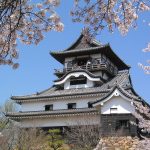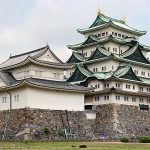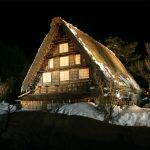Gifu Castle
Gifu Castle is a magnificent historical monument atop Mount Kinka, offering breathtaking panoramic views of the surrounding natural beauty. It is a testament to Japan’s feudal history and played a pivotal role in shaping the nation’s cultural and political landscape. The castle was built in the early 13th century as a fortress, and its strategic location made it a coveted seat of power among feudal lords. Oda Nobunaga, a prominent figure in Japan’s unification during the Sengoku period, seized control of the castle in 1567. Originally called Inabayama Castle, Oda Nobunaga renamed it Gifu Castle, marking it as a regional center of political and cultural significance.
Although the castle fell into disrepair after the Battle of Sekigahara in 1600 and its original structures were destroyed, it was reconstructed in 1956 using modern materials, ensuring its survival as a symbol of Gifu City. Today, Gifu Castle is a well-curated museum with a fascinating exhibition hall showcasing artifacts and exhibits narrating its rich history. The observation gallery on the top floor offers visitors breathtaking panoramic views of the Nagara River, the surrounding mountains, and Ise Bay to the south, making it a highlight for most visitors.
There are two ways to reach Gifu Castle, and both are equally exciting. Visitors can either embark on a scenic hike up the mountain on one of the trails or take a leisurely 3-minute ride on the Kinka Ropeway (also known as Kinkazan Ropeway) for a magnificent view of the North/Northwest side of Gifu. Once you reach the top of the ropeway, you can take a pleasant walk up to the castle, which would take around 15 minutes. The castle is now a museum filled with weaponry and artifacts from its history, giving visitors a glimpse of Japan’s rich cultural heritage.
At night, Gifu Castle takes on a magical quality, with the illuminated castle casting a mesmerizing glow over the city until 11 p.m. The castle extends its opening hours during the summer, allowing visitors to enjoy the nighttime beauty of the region, making it one of Gifu’s most popular night spots. Gifu Castle invites visitors to journey through time and experience a unique blend of historical insight, architectural splendor, and natural beauty. Whether visiting during the day or night, the castle remains a timeless emblem of Japan’s enduring heritage, making it a must-visit destination for those seeking to immerse themselves in the saga of a nation.
Gujo Hachiman Castle
Gujo Hachiman Castle is a historical landmark located in the city of Gujo, Gifu Prefecture, Japan. It was built in 1559 by the feudal lord Endo Morikazu and played a significant role during Japan’s tumultuous Sengoku period. The castle is renowned for its impressive architecture and strategic location. Built atop a hill at an altitude of over 300 meters, it provided a commanding view of the surrounding area, which was crucial during times of conflict for better defense and observation of enemy movements.
Over the centuries, Gujo Hachiman Castle underwent several reconstructions and changes in ownership. However, during the Meiji Restoration in the late 19th century, the castle was demolished as part of a broader movement to modernize Japan and reduce the power of the feudal lords. In 1933, the castle was rebuilt using traditional materials and methods, and the design aimed to replicate the original 16th-century structure, primarily using wood. Today, it stands as a symbol of Japan’s rich feudal history and architectural heritage.
Besides its historical significance, Gujo Hachiman Castle is famous for its breathtaking views of the surrounding town and countryside, particularly during cherry blossom season. The area is also known for its clean waterways and traditional dances, making it a popular cultural and tourist destination.
Sunomata Castle
Nestled at the scenic confluence of the Sai and Nagara Rivers, just outside Ogaki City in Gifu Prefecture, lies the historic Sunomata Castle. This small yet storied castle, also known as “Ichiya” or “One Night Castle,” has played a significant role in the annals of Japanese feudal history. Sunomata Castle’s fame largely stems from its association with Toyotomi Hideyoshi, one of the most prominent generals of the famed samurai warlord Oda Nobunaga. Constructed during the buildup to the siege of Gifu Castle in 1567, the castle is a testament to Hideyoshi’s strategic acumen and innovative military tactics.
Contrary to the legend of the castle being built overnight, it actually took two to three days to complete the basic defensive structures. Toyotomi Hideyoshi, demonstrating remarkable ingenuity, used prefabricated sections to expedite the construction. This rapid assembly was a feat of engineering and a potent psychological weapon to demoralize the enemy, Saito Tatsuoki, the lord of Inabayama Castle (later renamed Gifu Castle).
The success of Sunomata Castle’s construction marked a turning point in Hideyoshi’s career, elevating his status within Nobunaga’s forces. It also played a pivotal role in Nobunaga’s campaign, leading to his dominance over the Mino and Owari domains. This event was a crucial step in Nobunaga’s broader mission to unify Japan during the tumultuous Warring States period. Hideyoshi would later replicate this strategy of rapid fortification during the Siege of Odawara in 1590 with the construction of Ishigakiyama Ichiya Castle, further cementing his reputation as a master strategist.
The Sunomata Castle visitors see today is a concrete reconstruction completed in 1991, modeled after the nearby Ogaki Castle. This modern structure offers a more grandiose vision than the original castle, essentially a wooden-walled fortress with basic amenities and lookout towers. Now serving as a local history museum, the castle offers visitors insights into its storied past, including the rise of Toyotomi Hideyoshi and the castle’s role in the siege of Gifu Castle. Exhibits include georamas of the castle and the township as they would have appeared in the late 1500s, along with samurai weapons and armor found during excavations.
A visit to Sunomata Castle takes you on a journey through time. The castle showcases feudal Japan’s architectural evolution and tells the story of strategic warfare and psychological tactics used by legendary samurai leaders. Its location on the riverbanks makes it a beautiful spot for cherry blossom viewing, adding to its allure. Despite its significance in Japanese history, Sunomata Castle remains a less-trodden destination, offering a serene and insightful experience away from the usual tourist trails. The breathtaking views of Gifu Castle to the north and the distant skyscrapers of Nagoya add to the charm of this historical site.
Alpsdake, CC BY-SA 4.0, via Wikimedia Commons




